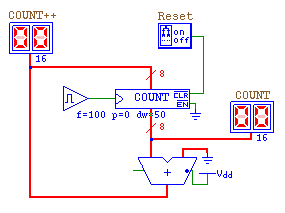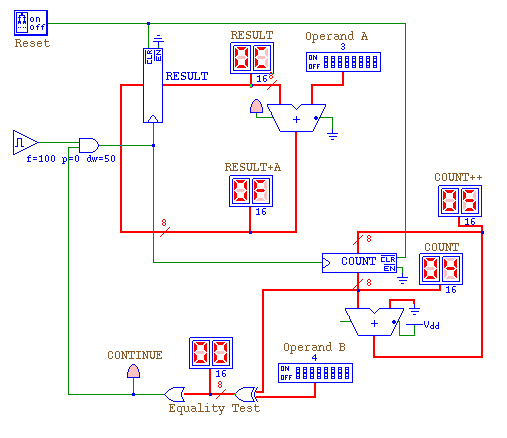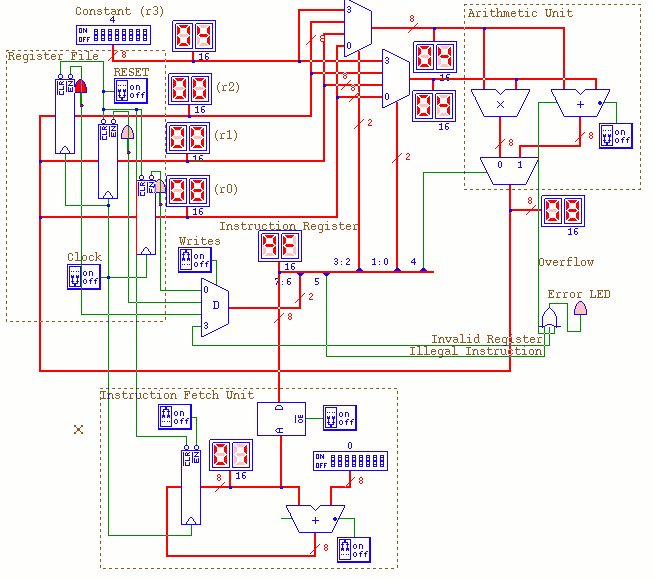Designing Complicated Circuits
CS 441 Lecture, Dr. Lawlor
The little calculator circuit we designed last class really gained
power when we connected the arithmetic output back into the register
input--this lets the circuit keep working away on the same variables,
without anybody having to feed it.
This feedback idea can be boiled down to this simple counter circuit:

The idea is that each clock cycle, we increment count by adding it to
zero plus a carry. Note rather than manually flipping the clock,
I'm using TkGate's "Clock" object to avoid timing glitches (the
annoying yellow undefined results). With a clock, you can advance
the simulator by one clock cycle by pressing the tab key.
Note that this counter is equivalent to the code:
int count=0;
while (1) count++;
This counter will keep counting forever, but you can turn off its clock
line (e.g., by ANDing it with a false value) to stop the count.
Here's a more complicated circuit we developed in class. It's a (inefficient) multiplier circuit, equivalent to this code:
int multiply(int A,int B) {
int RESULT=0;
for (int COUNT=0;COUNT!=B;COUNT++)
RESULT = RESULT + A;
return RESULT;
}

Note how every temporary expression (such as RESULT+A) in the program
has a corresponding wire in the circuit. We implement equality
testing by XORing the two numbers, and ORing the bits of the result;
because anything XOR itself is zero, this hits zero when COUNT==B,
which shuts off the clock. This control flow dependence is the
only interaction between the COUNT circuit and the RESULT circuit.
The same feedback idea can be used to add a stored-program ROM to our
little CPU. The idea is we increment a "program counter" every
clock cycle, and use that location as an address into a little ROM:

You'll also need this ".mem" file, which contains "0/" (meaning start at simulated ROM address zero) followed by separate bytes of machine code.


